BY ROBERT ABELE
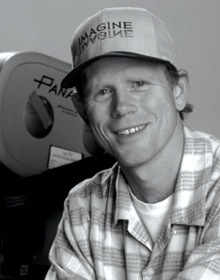 Ron Howard remembers witnessing a shuttle launch as an experience like no other. “It can be exhilarating to watch, and there’s literally a wave of sound and force you hear and feel,” says the director. “It moves a lot of people to tears.”
Ron Howard remembers witnessing a shuttle launch as an experience like no other. “It can be exhilarating to watch, and there’s literally a wave of sound and force you hear and feel,” says the director. “It moves a lot of people to tears.”
Although his 1995 film Apollo 13 would recount a tense effort to return three astronauts safely to Earth from an aborted moon mission, it first had to convey the awesome power of a successful launch.
Initially, Howard thought about assembling the launch sequence from NASA’s archival footage, but there was a problem. “We didn’t uncover anything new and breathtaking,” he says. “You’d seen all the great shots.” He then considered a mixture of archival and movie-magic shots using angles a camera could never have captured at a real launch. Finally, generating it all from scratch by using sets, models, composite work and burgeoning computer-generated imagery seemed the best way to go.
“Ironically we wound up creating shots that were intended to look like the archival footage that people were familiar with,” says Howard, “but it reinforced the authenticity of the sequence, and it allowed us to put the audience in places they’d never been before visually.”
The launch scene is a stirring evocation of human achievement and mechanical wonder that is both nostalgic and cinematically of-the-moment. It begins with the emotional weight of a mission and ends with literal weightlessness. The liftoff is also a moment of personal triumph for astronaut Jim Lovell (Tom Hanks). “It’s one of the two or three sequences I’ve been involved in that I’m the most proud of,” says Howard.
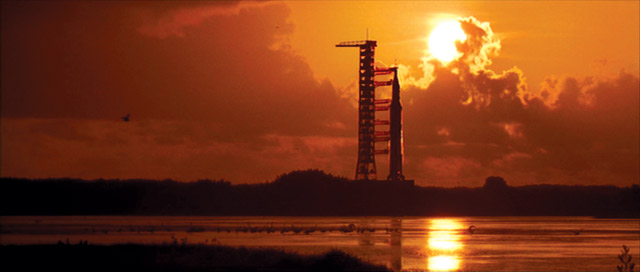
This is a beautiful background plate shot in the morning clouds near Cape Canaveral. A dawn unit shot the plates. That’s our model rocket, launch pad and launch tower composited on to the background. We were one of the last big model shows. CGI had made a couple of breakthroughs in the years preceding this movie, but our visual effects supervisor at Digital Domain felt models could ensure a more authentic feel. I had this desire to satisfy the audience’s curiosity about the details of a launch in strongly visual ways, and I wanted to put the camera in places where they could never physically go.
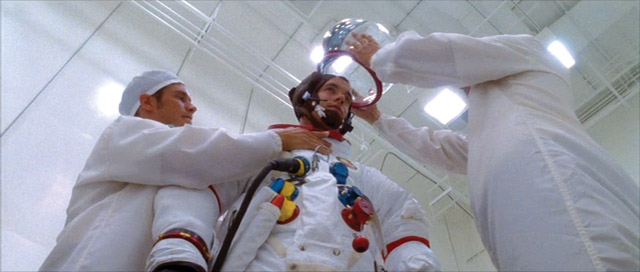
Much of the movie is influenced by archival footage I’d seen, and I wanted this suiting-up sequence to mirror a knight getting ready to go into battle. That’s the feeling I got when I saw documentaries of this phase. All the astronauts would talk about how quiet it would be. This is something I didn’t really shot-list. I just watched the guys go through the process and had a few angles in mind. But when we were doing this, there was a feeling of reverence. The suits were all done to specs. We tweaked nothing for the sake of movies. Put it side by side with something you’d see at the Smithsonian, and it would be spot-on.
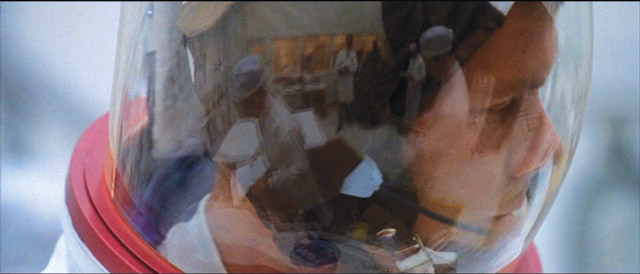
This shot was dealing with the kind of isolation they were going to experience, and I felt once you were locked in, it had to feel lonely, maybe terrifying. I thought it was beautiful with the reflections on the helmet, as long as you didn’t see the film crew. This is not from the era when you could take out the crew digitally. So we had to be cloaked in black to avoid seeing our reflections. You can see that there’s quite a bit of black there in the middle. That’s the team hiding out behind Lovell’s communications system.
The next two shots start on top in the fog and drop down. They’re the kind of shots you could never really get—they’d never let a helicopter that close at that point. So I thought, if you could get a helicopter, or mount a crane, what would it look like? So these are background plates of Cape Canaveral and one of the launch pads. They let us shoot plates there. After months and months of conversation, NASA was very cooperative in the end. The rocket here is a model.
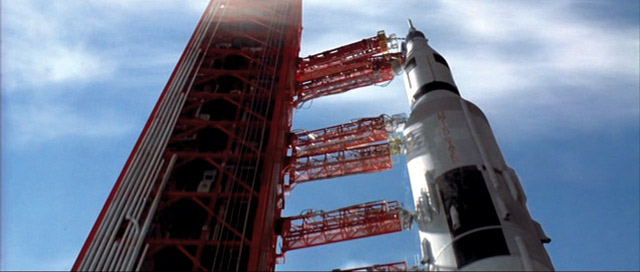
I felt that the camera move would really help convey the scale of the launch vehicle, and how tiny the command module really was on top of this huge building that was going to get thrust into the sky. At the same time, there’s also a shot of them going up in the elevator, so that’s another reason we did a tracking shot like this—it was the feeling of the elevator going up. The astronauts would always talk about taking the elevator and going up and through clouds, and how it was an unsettling feeling for them. The clouds, water and fire were impossible to do with CGI, so things like that are actual physical elements.
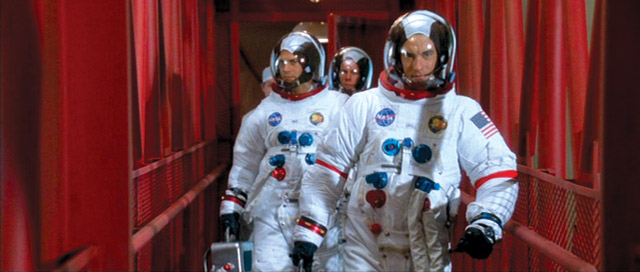
This is an absolute copycat from a number of the documentaries. It’s kind of a cowboy shot, in slow motion. We were probably humming the Magnificent Seven theme in our heads as we were doing this one. There’s something incredibly cool about these guys carrying their own oxygen packs and their own generators and making the walk to the launch vehicle. They’re really just up there alone, guys going to work. This was shot on the Universal back lot, on a piece of the gantry created by production designer Michael Corenblith, surrounded by blue screen.
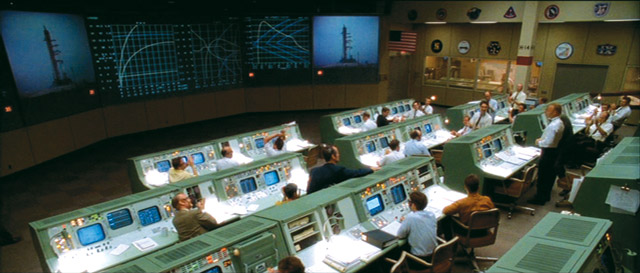
I really shot the film as a three-way interaction between the capsule, mission control and the Jim Lovell house. So the control room became very important to me. This was on a huge stage at Universal and it was very authentic. About 10 or 15 percent of the components that went into the consoles were on loan to us from NASA. [DP] Dean Cundey and I talked about how to balance the light in such a way so you really understand that each of these mission controllers had their own pod and were coping with their own problems. We used a lot of archival footage on the screens so the actors would have something to react to.
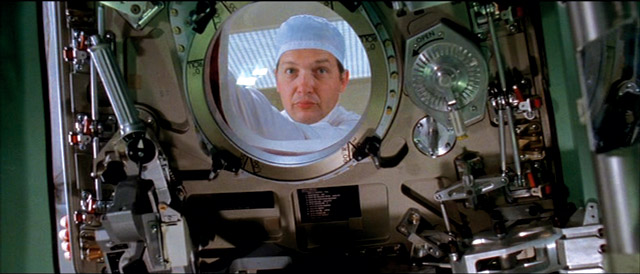
This is the last person to see them, sealing them into the command module. They’re on their own now, outside of their team in Houston. The module was made for us by a company in Kansas that made replicas for air and space museums around the world. We had capsules built on two different stages, and sometimes we’d prep one on one stage while we were shooting another on another stage. Sometimes we’d even shoot things simultaneously. But it was an incredibly cramped space. I kept it chilled to about 35 degrees so that you could see their breath.
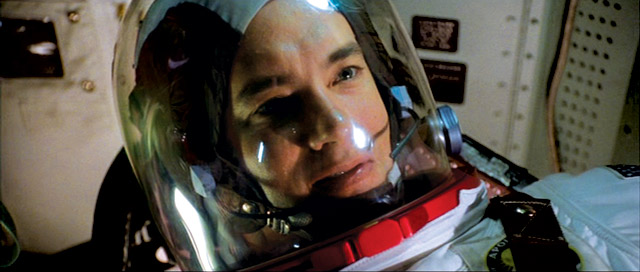
There’s nothing better than a close-up to get an idea of intellectual endurance and focus across. Naturalism was what we were striving for with the lighting, but once we got in the capsule we were dependent on source lighting. We may have slipped in a fill once in a while, but pretty much we relied on practical lighting. One of the ways we got the capsule to behave in interesting ways was to not put it on a mechanical gimbal, but put it inside a steel frame with pick points, and hang it from the ceiling with chains. We could vibrate it, jolt it, but it was all the old-fashioned way. Then we could remove panels so we could get cameras in various positions.
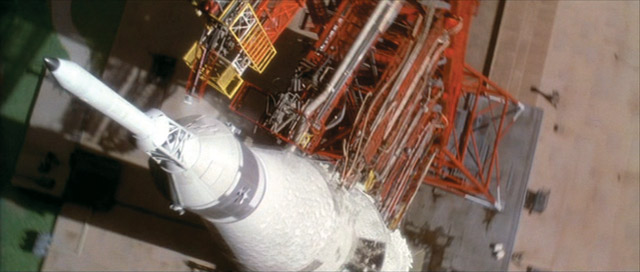
This is the beginning of a shot that’s dropping down to demonstrate the height of the ship as each support arm is disengaging. As the rocket starts to rumble and take off, you can see the liquid oxygen starting to freeze and fall away. It’s something you see in archival footage, and I was always a little concerned about it, because at the time those tiny elements were very difficult to show. We did some experimenting with the Digital Domain guys and came up with a great program. So what you’re seeing is CGI ice. It was something we had to get, and it came rather late in the process, but it was a big relief.
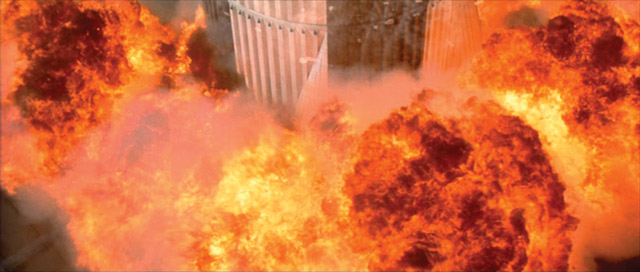
They always talk of a fiery bellow right before launch, that there’s this unbelievable explosion of flame, and it’s really frightening and stirring. We did this out in a parking lot as I recall, with a pretty large model and real fire. A pretty good volume of it, too. It just comes and envelops the camera. That’s all shot at hundreds of frames a second. Then I cut to the ‘act-ronauts,’ as I called them, and you realize that they’re sitting on top of a hell of a roman candle. It also creates a tremendous opportunity for sound, with a lot of low end to create that thumping effect in their chest for the audience.
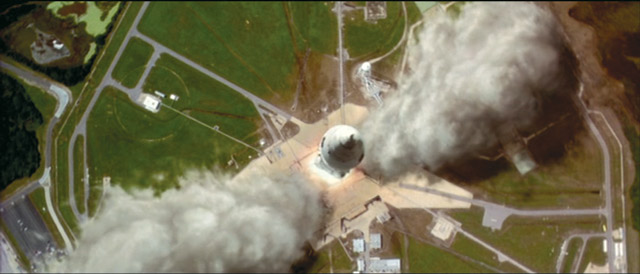
In archival footage I would see the launch vehicle go up, and I just started dreaming of this image. In movie vernacular you’d call it a pass-by. So if you had a helicopter, you could get an image like this, but then, of course, the helicopter would be blown out of the sky. I felt we could startle the audience by taking that leap into the impossible, and they wouldn’t blink an eye. It’s an aerial background of Cape Canaveral, and a motion-control shot of the model moving by the camera, and then we put the flame and smoke elements in later. There’s also a little vibration on the camera as it goes by.
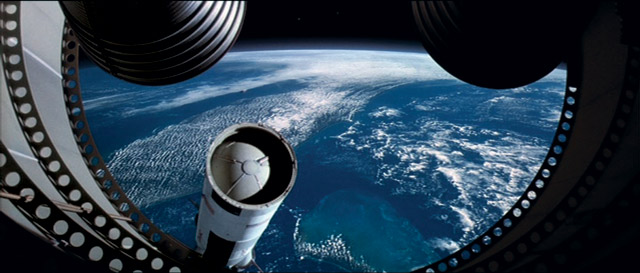
This is a famous shot and we’ve seen it before, but to use archival footage would have violated our rule of creating all our own shots. I’m certain the globe is a shot taken from the NASA archives, but everything else is a model. Many of the original elements, like movement in space, are shot at a very high speed, and it’s painstaking trying to recreate the archival footage in terms of timing. This image always reminds me of John Ford’s doorway at the end of The Searchers. But you don’t have John Wayne going off into the distance, but you do have the launch vehicle falling away, and you get the feeling it’s a new day.
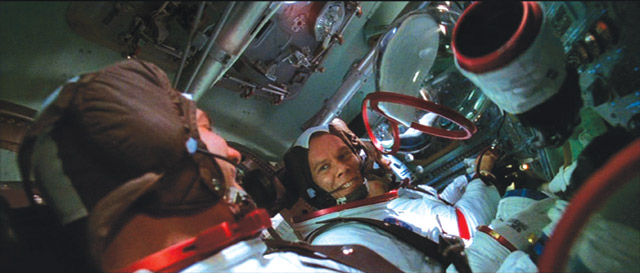
This was shot in a KC-135, an aircraft NASA uses to approximate weightlessness. The pilot climbs to 40,000 feet on about a 45-degree angle, then starts a dive. It’s like the roller coaster going over the top, and you’re free-falling. You feel like you’re floating, and it really recreates zero gravity. That’s how we filmed a lot of our master scenes. I directed while floating. We designed about 10 shots per flight, and we would do between 40 and 50 parabolas in an hour and a half. NASA thought we were going to be a lot of Hollywood nincompoops, but in the end they said we were the most efficient operation they’d ever witnessed.